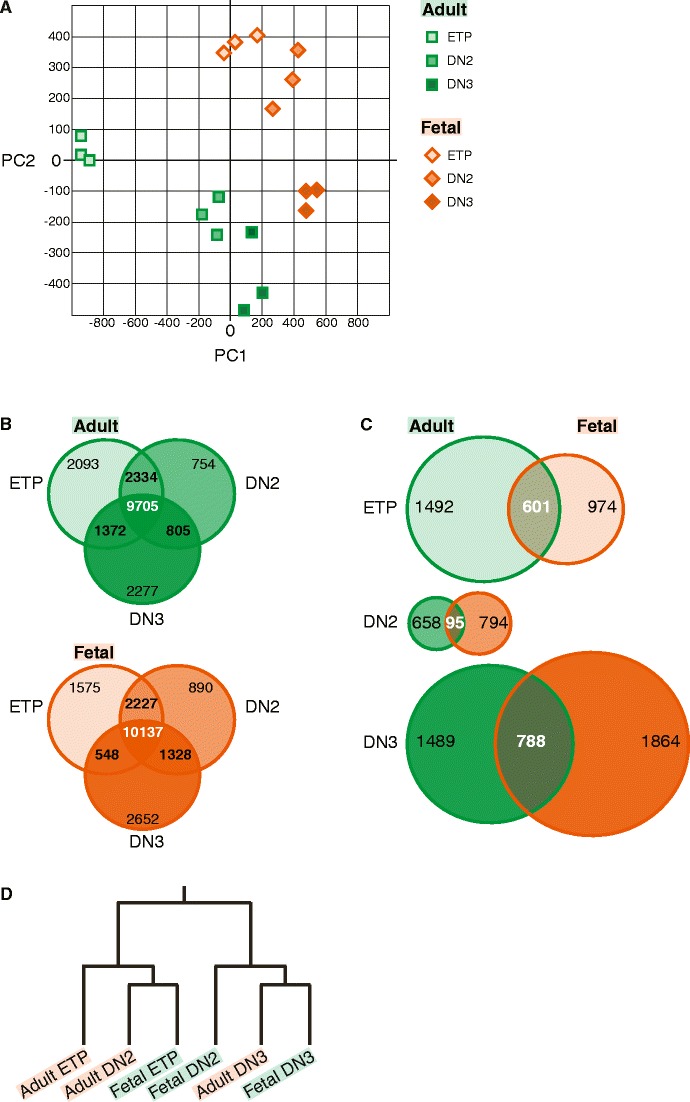Figure 4.

Compartmentalization of adult and fetal progenitor thymocytes according to gene expression signatures. a Principal component analysis based on all regulated genes illustrating “transcriptional territories” of adult and fetal T cell ontogeny. Each progenitor population has a distinct molecular signature based on which novel or aberrant hematopoietic progenitors can be classified. b Venn diagrams illustrating the overlapping and distinctive genetic elements in adult DN1 ETP, DN2 and DN3 progenitors as well as in analogous fetal subpopulations. Filtered sets of genes were grouped according to their absence or presence of transcriptional activity in every subpopulation. The majority of genes both in adult and fetus were expressed during differentiation; however, each population displayed a unique set of transcribed genes. c Venn diagrams illustrating the distribution of genes between adult and fetal DN1 ETP, DN2 and DN3 populations, respectively. Uniquely expressed genes in corresponding populations of adult and fetal development were compared. Analogous populations harbored a set of specific mRNA transcripts that defines each developmental stage. d Self-organizing map of adult and fetal progenitor populations. The dendrogram illustrating relationships between adult and fetal progenitors was derived via a self-organizing map. Fetal DN1 ETP and DN2 progenitors exhibited a closer relationship to the final commitment stage (DN3 stage) as compared to the respective adult populations, suggesting earlier specification of the T cell lineage during fetal ontogeny
